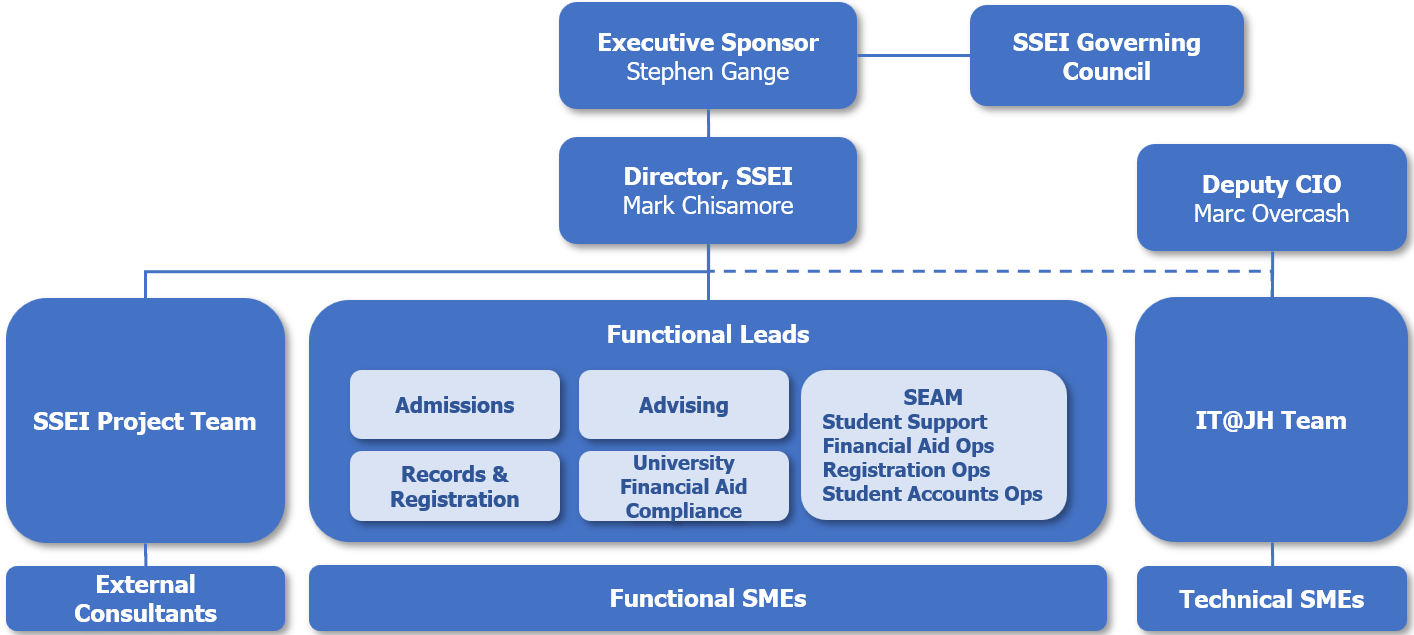Johns Hopkins UniversityEst. 1876
America’s First Research University
Replace Johns Hopkins University’s aging Student Information System (SIS) with a modern, efficient, and secure system to enhance operational effectiveness and competitiveness.
SIS’s vendor stopped supporting the system in 2014, putting the full administrative burden on JHU’s University Information Systems to not only maintain the increasingly outdated and outmoded system, but also to get it to integrate with newer, more modern systems in use at the university. A signficant amount of time and resources is spent on basic system maintenance that could be spent towards innovative enhancements to the student experience.


The current system silos each of JHU’s nine academic divisions, directly contradicting the university’s Ten for One framework. Information is not easily transferrable or retrievable across silos. This limits the ability to information share and collaborate across departments and divisions, which is crucial for the One University vision. Furthermore, siloed data makes it difficult to implement modern data governance and management practices.
Staff who support students are also constantly routed to different systems and sources to gather all the necessary information they need, leading to inefficiencies, frustrations, and greater opportunities for error. Additionally, the lack of intuitiveness of the current system adds a barrier to train new and incoming staff on processes and procedures.


The current system hinders the ability to provide timely and effective student services, affecting several stages of the student journey. As a result, students often endure what is colloquially known as the “Hopkins Shuffle,” being redirected to multiple departments to try and seek assistance.


| Pre-Work Activities | – Partnership with Beyond Academics, an education consulting firm – Align university stakeholders across SIS functional areas on specific requirements – Align and coordinate university stakeholders on modernized workflows, policies, and procedures |
| Vendor Selection Process | – Conduct a well-structured Request for Proposal (RFP) procedure to select a vendor |
| Implementation Phase | – A 3-4 year phase with structured governance, vendor oversight, and accountability to ensure effective use of human and financial resources. |
| Post Go-Live Initiatives | – Focus on optimizing the system’s performance and addressing any post-implementation challenges to guarantee a smooth operational transition. |
